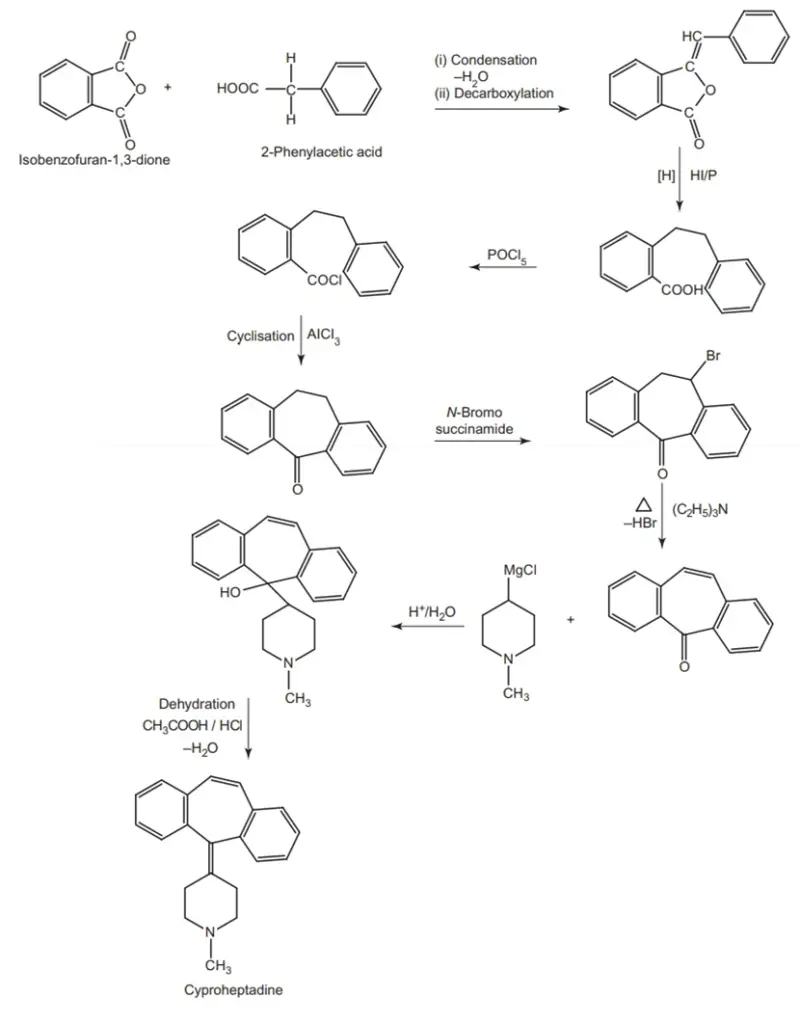Dibenzocycloheptene derivatives” refer to a group of chemical compounds that share a common structural motif of a dibenzocycloheptene ring system. This structure consists of two benzene rings fused to a cycloheptene ring. These derivatives can have various substituents and modifications, leading to a diverse range of compounds with different properties and potential applications. One well-known example of a dibenzocycloheptene derivative used as an antihistamine is cetirizine.
Cyproheptadine (Periacetin)
Introduction
Its multifaceted pharmacological properties make cyproheptadine a versatile pharmaceutical agent. As a first-generation antihistamine, it serves as a competitive antagonist at H1 histamine receptors, effectively mitigating the effects of histamine and providing relief from allergic symptoms. Beyond its antihistaminic action, cyproheptadine exhibits anticholinergic and antiserotonergic effects, contributing to its diverse range of clinical applications. Cyproheptadine is effective in treating allergic conditions like rhinitis and conjunctivitis.
Structure

Synthesis

Mechanism of action
Cyproheptadine exerts its pharmacological effects through a combination of mechanisms:
- Antihistaminic Action:
- Cyproheptadine competitively blocks H1 histamine receptors, alleviating symptoms linked to histamine release in allergic reactions, such as itching, sneezing, and a runny nose.
- Anticholinergic Action:
- Cyproheptadine has antimuscarinic effects, meaning it blocks the action of acetylcholine at muscarinic receptors.
- This can reduce specific cholinergic effects, contributing to its application in conditions where a decrease in acetylcholine activity is sought.
- Antiserotonergic Action:
- Cyproheptadine has serotonin receptor-blocking properties.
Uses:
- Allergic Conditions: Primarily used to treat allergic conditions such as allergic rhinitis, conjunctivitis, and dermatographism.
- Appetite Stimulation: It is sometimes prescribed to stimulate appetite and promote weight gain, particularly in pediatric patients.
- Migraine Prophylaxis: Used for the prevention of migraines.
Assay:
Dissolve the sample in a mixture of 0.01 M hydrochloric acid and alcohol and titrate against 0.1 M sodium hydroxide. Determine the end-point potentiometrically.
Dose:
Usually, the dose is 4 mg taken orally three times a day.
Dosage forms:
Cyproheptadine HCl syrup I.P., Cyproheptadine HCl tablets I.P., Cyproheptadine tablets B.P.

